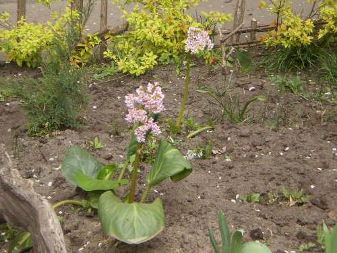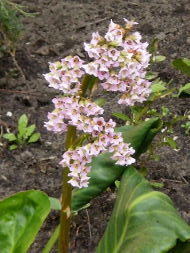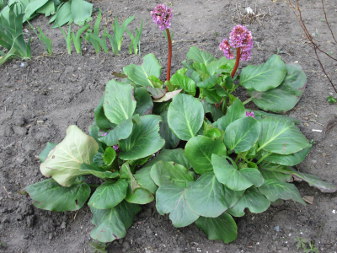




Siberian tea (Bergenia crassifolia), fam. Saxifragaceae.
Evergreen perennial plant, which is able to decorate any yard, garden or country cottage. It flowers in early spring. In summer, the flower spike remains dry with ripe fruits on it, but the leaves keep being green and succulent.
The plant is widespread in the cool continental parts of Asia - in Siberia, Kazakhstan, Mongolia, China, Russian Far East. The local people of that places are fond of the tea, which is usually brewed from dried badan leaves that passed through at least one winter, and even better - that has been hunging dry several years. In Ukraine, badan is cultivated as an ornamental plant, and as a source of medicinal and technical stuff.
The roots and leaves of Siberian tea contain high concentrations of tannins (gallotannins), and the glycoside arbutin. In the body, the latter is partially transformed to hydroquinone, having disinfectant properties against the inflammatory processes in the bladder. This substance is not considered safe, since it has some adverse side effects, and should not be used without real necessity.
Besides, Siberian tea has astringent and healing effect for gum inflammations, colitis, and diarrhea (but contraindicated in case of constipation), it strengthens the walls of blood vessels, accelerates wound healing and stops bleeding. It is also used for acute infections and in gynecology. Badan has hepatoprotective properties. The Siberian tea is a tonic.
The rhizome, moderately rich in starch, becomes edible after removing the tannins from it.
The technical value of Siberian tea is for leather tanning, and to made dark-color dyes. On the opposite, arbutin from the plant is able to discolor the suntan and the dark spots on the skin.
Badan is propagated by rhizome division, which is done either in autumn or in early spring before blooming. The rhizomes that are located close to the soil surface are carefully dug and pulled out, and cut. The division of badan should be conducted approximately once in 3 years.